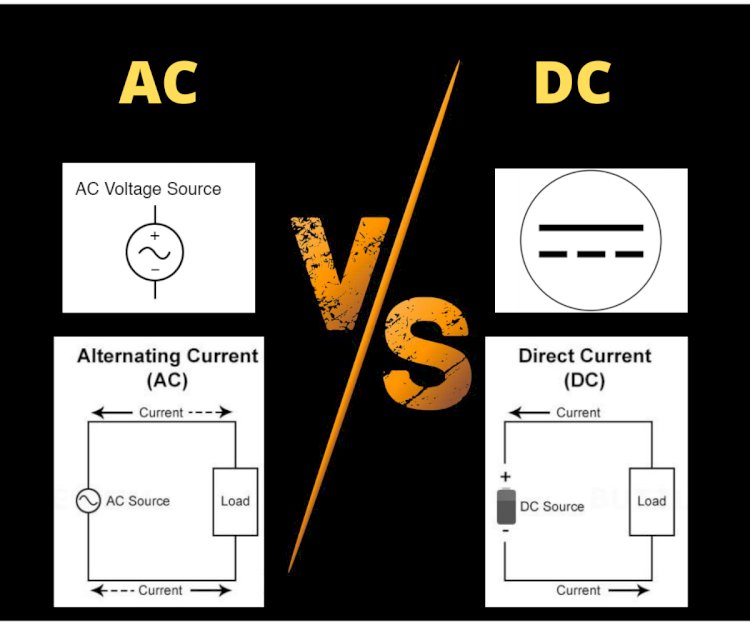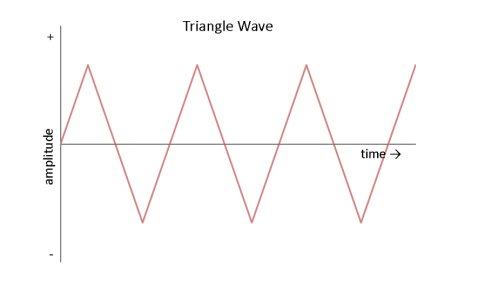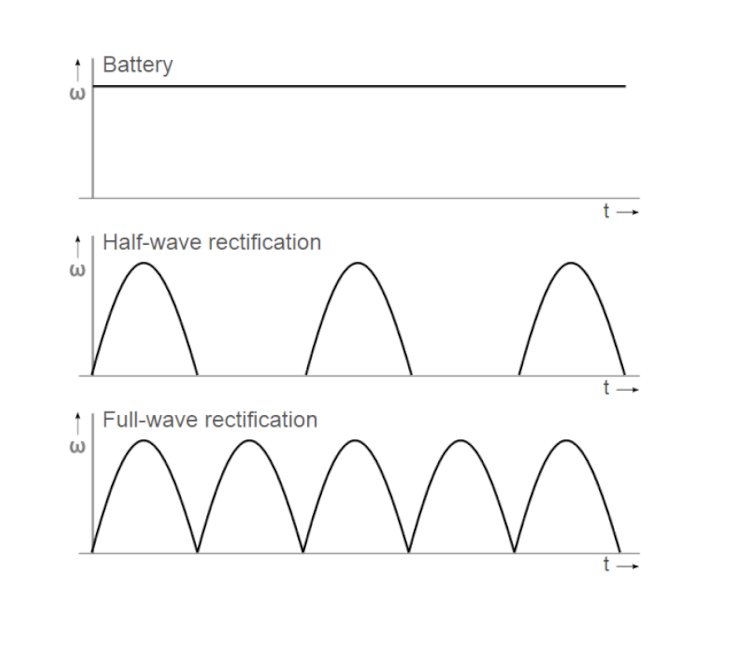Difference Between AC and DC
The Difference between AC and DC Mainly include Frequency, Direction, Current, Types, Flow of Electrons Obtained from Passive Parameters. The main difference between AC and DC lies in the direction in which the electrons flow.

In this article ,we are here with the difference between the technological terms. Ac and Dc are the two common terms related to flow of electric charge, AC stands for alternating current and DC stands for direct current. This article covers up tutorial guide to AC and DC. With this, it also includes the differences between AC and DC.
AC vs DC
If we go through any electrical related topics most important thing which comes in mind is Electric current.
An Electric current is a flow of charge.
The SI unit for measuring using a device called Amphere.
- Electric current is measured using a device called Ammeter
Formula-
I = Q/T
I – Rate of flow of Electric current
Q – Amount of charge
T – time
So, current is the rate of flow of charge, in other words it’s the amount of charge flow every second. It’s the simplest formula which represents the current flow in the wire across a cross-section.
- Electric current that will flow through current is
Current is the amount of flow of charge, it can also be represent in the terms of voltage and resistant. Where current(“I”) is inversely proportional to voltage(“V”) ,when the proportionality sign is replaced with “equal-to“ sign then a constant term comes into picture ,that constant term represents the resistance in the Circuit.
I = V/R
Ohm’s Law
Where
V = potential difference
I = current
R = Resistance
Current are generally 2 types
1) A/C – Alternating Current
2) D/C – Direct Current
1. AC (alternating current)
Alternating current (A/C) is the electric charge which periodically changes direction (50hz :- means the electric current changes its direction 50 times in a second). In case of alternating current the electric current (ampere) can increase or decrease under the same voltage limit.
The AC current when plotted on a graph, is similar to sinusoidal form( it has three forms square wave, triangular wave, sine wave). Ac current can be converted into DC current with the help of rectification circuit(p-n junction diode). Voltage of DC current after conversion from AC current is equal to Vrms , were rms = Vmax / √2. (Vmax is the maximum voltage in case of AC current and Vrms is root mean square of fluctuating AC voltage)
Waves Forms
- Sin wave
2. Square wave
3. Traingular wave

2}D/C (Direct current )
Direct current (DC) is an Electric current which is unidirectional flow of electric charge (i.e voltage from negative to positive).It has fixed voltage value. It is the maximum voltage in a closed circuit, which is generally the voltage difference between the two poles of the battery.
Dc current works best in the range of ( 3 volts to 5 volts).It gives power in the range of(5 to 10 watts). Direct current can be obtained from obtained from solar panels , batteries, thermocouples . Direct current can be converted into AC with the help of inverter circuit.
Types of Direct Current Waveforms


Fig. Electric current
Here's the difference between A/C & D/C shown below :-
|
Basis Of Distinction |
A/C |
D/C |
|
Define |
The current flowing in Alternating or Sinusoidal form is called AC. |
The current flowing through in Direct or pulses form called Direct Current |
|
Full Form |
Alternating Current |
Direct Current |
|
Frequency |
The frequency of AC varies 50-60hz depend upon the country |
The frequency of DC is 0. |
|
Direction |
1.The Direction of AC is reverse
2.constantly changes (positive to negative) |
1.The DC flow in one direction
2.same direction (negative to positive) |
|
Direction of flow of electrons. |
Bidirectional |
Unidirectional |
|
Causes of flow of electrons |
Rotating a coil in a uniform magnetic field or rotating a uniform magnetic field within a stationary coil |
Constant magnetic field across the wire |
|
Types of Waves |
1. Sinusoidal 2. Triangular 3. Square |
1. Pulsating 2. Pure |
|
Obtained |
AC current obtains from main supply and is generated from Invertors also |
DC current obtained from batteries |
|
Current |
It is the current of magnitude which is varying with time |
It is the current of constant magnitude. |
|
Power Factor |
Lies between 0 and 1 |
Always 1 |
|
Polarity |
It has polarity (+, -) |
Do not have polarity. |
|
Type of load |
Their load is resistive, inductive or capacitive. |
Their load is usually resistive in nature. |
|
Transmission |
Can be transmitted over long distance with some losses. |
It can be transmitted over very long distance with negligible losses. |
|
Convertible |
Easily convert into direct current |
Easily convert into alternating current |
|
Substation |
Few substation is required for generation and transmission. |
More substations are required for generation and transmission. |
|
Passive Parameter |
Impedance |
Resistance |
|
Harazdous |
Dangerous |
Very dangerous |
|
Storage & Conversion |
AC can be converted into DC with the help of Rectification circuit and is easy to use for mobiles and laptops etc. |
DC can be converted in to AC with help of Inverter circuit and easy to use in homes and lights. |
|
Application |
Factories, Industries and for the domestic purposes. It is uses in fans ,Refrigerator, Split A.c |
Electroplating, Electrolysis, Electronic Equipment etc. It is uses to charge batteries and as power supply for Electronic systems. |
|
Examples |
Audio and Radio |
Mobile, laptops and Utensil |
Alternating current and Direct current are the two forms of current which are convertible from one form to another. Each of the two forms are different from one another in many ways. Every such parameter are discussed in the above section. But the major difference is that the direct current has unidirectional flow of electric charge while in alternating current the electric charge flows in both directions.

 Arindam Deshmukh
Arindam Deshmukh 



















